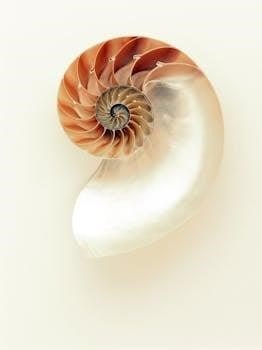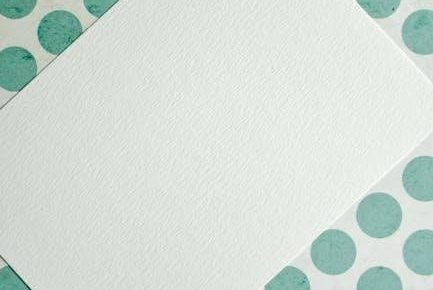Cholecystitis Diet⁚ A Comprehensive Guide
Navigating a cholecystitis diagnosis requires dietary adjustments to manage gallbladder inflammation and pain. This guide offers a comprehensive overview of dietary recommendations, helping you understand which foods to embrace and avoid, and how to create a meal plan that supports your gallbladder health and overall well-being.
Understanding Cholecystitis
Cholecystitis refers to the inflammation of the gallbladder, frequently triggered by gallstones obstructing the cystic duct. This blockage can lead to a buildup of bile, causing pain and inflammation. Infection can also contribute to the development of cholecystitis. Abdominal pain, particularly following the consumption of high-fat meals, is a hallmark symptom.
Cholecystitis can manifest in two forms⁚ acute, representing a sudden and temporary issue, and chronic, indicating a long-term, ongoing condition. Dietary management plays a crucial role in alleviating symptoms and preventing further complications, such as inflammation or severe attacks. A tailored meal plan can provide relief and support gallbladder healing.
The gallbladder’s primary function is to store and release bile, aiding in fat digestion. When inflamed, bile release can trigger pain. A low-fat diet reduces gallbladder workload, promoting healing. Consulting a dietitian ensures an eating plan that minimizes irritation and aligns with your individual needs. A nutrient-dense diet supports gallbladder health, reducing the risk of issues associated with cholecystitis.
The Role of Diet in Managing Cholecystitis
Diet plays a pivotal role in managing cholecystitis, aiming to reduce risk factors contributing to gallstone formation and prevent inflammation. While special diets may not always eliminate gallstones, they can significantly alleviate symptoms and prevent complications like cholecystitis. Dietary adjustments can help to reduce the frequency and severity of gallbladder attacks, which can lead to inflammation if left unmanaged.
A low-fat diet is often recommended to give the gallbladder a rest and promote healing. When you consume food, the gallbladder releases bile to digest fats. An inflamed gallbladder can cause pain during this process. Therefore, minimizing fat intake can reduce the gallbladder’s workload and associated discomfort.
Dietary relief is a primary reason people seek help for gallbladder issues. Experts emphasize the importance of consuming nutrient-dense foods and avoiding ultra-processed options. A well-structured diet can provide essential nutrients while minimizing the risk of triggering gallbladder symptoms, supporting overall health and well-being in individuals with cholecystitis.
Foods to Avoid with Cholecystitis
When managing cholecystitis, certain foods can exacerbate symptoms and should be avoided. High-fat foods are primary culprits, as they stimulate bile release, stressing an already inflamed gallbladder. These include fried foods, which are often loaded with unhealthy fats, and processed meats, known for their high fat content and additives.
Full-fat dairy products, such as whole milk, cheese, and butter, should also be limited due to their significant fat content. Processed baked goods, like cakes and pastries, often contain unhealthy fats and sugars that can contribute to gallbladder issues. Fast food, typically high in fat, salt, and processed ingredients, should be avoided entirely.
Most packaged snack foods, such as chips and many crackers, are also high in unhealthy fats and additives. Canned fish packed in oil should be limited, opting instead for those in water. Avoiding these foods can help reduce the gallbladder’s workload, minimize inflammation, and alleviate symptoms associated with cholecystitis, promoting overall comfort and well-being.
Low-Fat Diet⁚ The Cornerstone of Cholecystitis Management
A low-fat diet is fundamental in managing cholecystitis, aiming to reduce the gallbladder’s workload and minimize pain. When you consume fat, the gallbladder releases bile to aid digestion. An inflamed gallbladder struggles with this process, leading to discomfort. A low-fat approach helps the gallbladder rest and heal, preventing irritation.
The primary goal is to limit fat intake, typically to less than 30% of your daily calories. This means carefully selecting foods and avoiding high-fat options like fried foods, processed meats, and full-fat dairy. Instead, focus on lean proteins, whole grains, fruits, and vegetables.
Reading food labels is crucial to monitor fat content. Opt for cooking methods that minimize added fats, such as baking, grilling, or steaming. Remember that a low-fat diet isn’t about eliminating all fats, but rather choosing healthier, unsaturated fats in moderation. Consulting a dietitian can help tailor a personalized low-fat meal plan that meets your nutritional needs while supporting gallbladder health.
Foods to Include in a Cholecystitis Diet
A cholecystitis-friendly diet should emphasize foods that are easy to digest and don’t overburden the gallbladder. Lean proteins like poultry, fish, and plant-based sources (beans, lentils, tofu) are excellent choices. Opt for skinless chicken and baked or grilled fish to minimize fat intake. Whole grains such as brown rice, quinoa, and oats provide fiber and sustained energy.
Fruits and vegetables are essential, offering vitamins, minerals, and antioxidants. Choose fresh, frozen, or canned options (in water, not syrup). Cooked vegetables are often easier to digest than raw. Incorporate a variety of colors to maximize nutrient intake.
Healthy fats, like those found in avocados, nuts, seeds, and olive oil, can be included in moderation. Focus on unsaturated fats rather than saturated or trans fats. Low-fat or fat-free dairy products, such as skim milk and yogurt, can provide calcium and protein. Remember to prioritize portion control and consider individual tolerance levels when incorporating these foods into your diet.
The Importance of Fiber, Protein and Vitamin C for Gallbladder Health
Fiber plays a crucial role in gallbladder health by promoting regular bowel movements and preventing constipation, which can contribute to gallstone formation. Soluble fiber, found in oats, beans, and fruits, helps bind to cholesterol in the digestive system, reducing its absorption. Insoluble fiber, present in whole grains and vegetables, adds bulk to the stool, facilitating waste removal.
Protein is essential for tissue repair and overall bodily function. Lean protein sources, like those mentioned earlier, are preferable as they minimize fat intake. Protein helps stimulate bile production, which aids in the digestion of fats. However, it’s important to balance protein intake with other nutrients.
Vitamin C acts as an antioxidant, protecting the gallbladder from damage caused by free radicals. It also plays a role in converting cholesterol into bile acids, potentially reducing the risk of gallstone formation. Citrus fruits, berries, and leafy green vegetables are excellent sources of Vitamin C. Incorporating these nutrients into your diet can significantly support gallbladder health.
Sample Meal Plan for Cholecystitis
Breakfast⁚ Start your day with a bowl of oatmeal prepared with skim milk and topped with berries. Add a sliced banana for extra potassium and fiber. A light tea or coffee (with skim milk) can accompany your meal.
Lunch⁚ Opt for a vegetable soup (avoiding creamy or fatty varieties) alongside a salad with cooked vegetables like carrots, string beans, peas, beets, or spinach; Be sure to avoid vegetables that could trigger symptoms. Choose a light vinaigrette dressing.
Dinner⁚ Prepare baked chicken breast (skinless) with a side of steamed green beans and quinoa. Ensure the chicken is seasoned without excessive fats or oils. A small portion of fruit salad can serve as a light dessert.
Snacks⁚ Throughout the day, snack on fruits like apples or bananas, or a small handful of almonds (unsalted). These provide energy and essential nutrients without overburdening your gallbladder. Remember to drink plenty of water throughout the day.
This sample meal plan emphasizes low-fat, high-fiber options to support gallbladder health. Adjust portion sizes and food choices based on your individual needs and tolerance.
Dietary Considerations After Cholecystectomy (Gallbladder Removal)
Following gallbladder removal (cholecystectomy), your body needs time to adjust to digesting fats differently. Bile, which was previously stored and released by the gallbladder, now flows directly from the liver into the small intestine. This change can initially lead to digestive discomfort.
In the immediate post-operative period, a low-fat diet is crucial. Start with clear liquids and gradually introduce easily digestible foods like broth, plain toast, and cooked cereals. As you recover, slowly incorporate more solid foods, focusing on lean proteins, fruits, vegetables, and whole grains.
Pay close attention to how your body reacts to different foods. Some individuals may experience temporary diarrhea or bloating after eating fatty foods. If this occurs, reduce your fat intake further and gradually reintroduce fats in small amounts.
While there isn’t a universal standard diet post-cholecystectomy, it’s generally advisable to limit processed foods, fried foods, and high-fat dairy products. Focus on a balanced diet rich in fiber to aid digestion and promote overall health. Staying hydrated is also important.
Consult with your doctor or a registered dietitian for personalized dietary guidance tailored to your specific needs and recovery progress.
Healthy Fats vs. Unhealthy Fats⁚ Making the Right Choices
When managing cholecystitis or recovering from cholecystectomy, understanding the difference between healthy and unhealthy fats is crucial. Not all fats are created equal, and choosing the right types can significantly impact your gallbladder health and overall well-being.
Unhealthy fats, primarily saturated and trans fats, can exacerbate gallbladder issues and increase the risk of gallstone formation. These fats are commonly found in fried foods, processed meats, full-fat dairy products, and many packaged snack foods. Limiting or avoiding these fats is essential for reducing gallbladder stress.
Healthy fats, on the other hand, play a vital role in maintaining overall health. Unsaturated fats, including monounsaturated and polyunsaturated fats, can be beneficial. Monounsaturated fats are found in avocados, nuts, and olive oil, while polyunsaturated fats are present in fatty fish, flaxseeds, and sunflower oil.
Incorporating healthy fats into your diet can help reduce inflammation and support cardiovascular health. However, it’s important to consume even healthy fats in moderation, as excessive fat intake can still trigger gallbladder symptoms.
Prioritize plant-based sources of unsaturated fats over animal-based saturated fats. By making informed choices about the types of fats you consume, you can contribute to a gallbladder-friendly diet and promote optimal health.
Seeking Professional Guidance⁚ Dietitian and Doctor Recommendations
Managing cholecystitis through diet can be complex, and seeking professional guidance from both a registered dietitian and your doctor is highly recommended. While general dietary guidelines can be helpful, personalized advice tailored to your specific needs and medical history is invaluable.
A registered dietitian can create a customized meal plan that considers your individual dietary preferences, nutritional requirements, and the severity of your gallbladder condition. They can provide guidance on portion sizes, food preparation methods, and strategies for managing symptoms while ensuring you receive adequate nutrients.
Your doctor can assess your overall health, diagnose any underlying medical conditions contributing to your cholecystitis, and recommend appropriate medical interventions. They can also monitor your progress and adjust your treatment plan as needed.
Collaboration between a dietitian and your doctor ensures a comprehensive approach to managing your cholecystitis. The dietitian can translate your doctor’s recommendations into practical dietary strategies, while your doctor can monitor the effectiveness of the dietary changes and address any potential complications.
Don’t hesitate to seek professional guidance to navigate the complexities of a cholecystitis diet. Their expertise can empower you to make informed choices and improve your gallbladder health.


